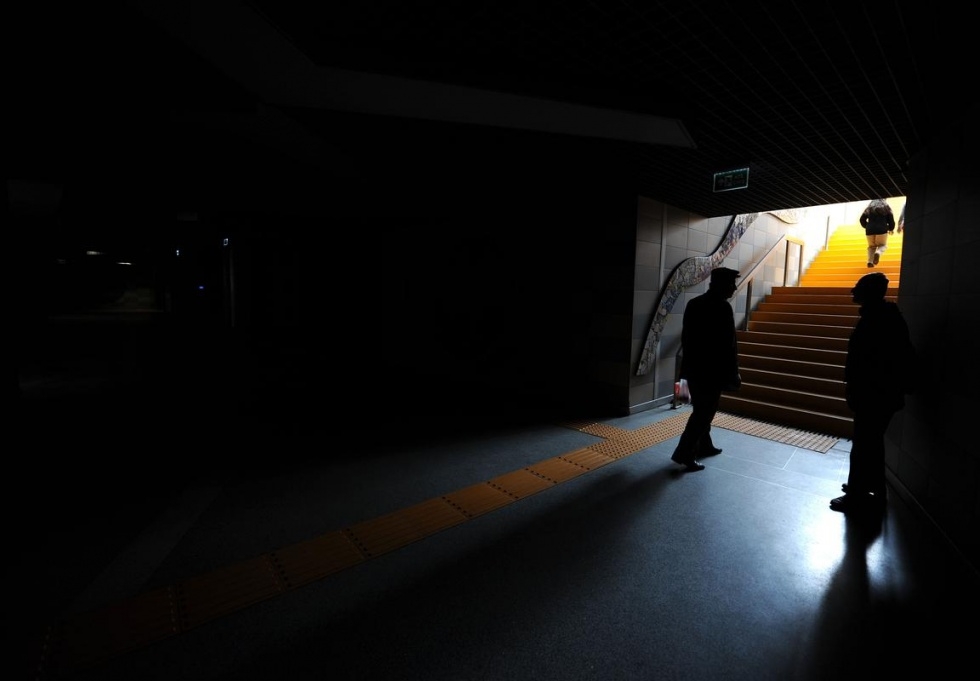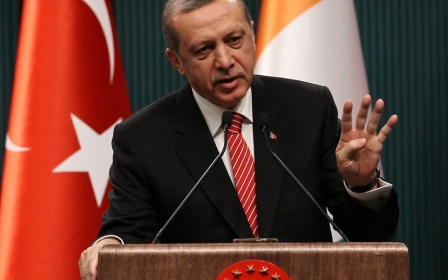Turkey grinds to halt after massive power cut

A massive power cut caused chaos on Tuesday across Turkey, shutting down the metro networks in Istanbul and the capital Ankara, with the government saying an outside attack on the system was not ruled out.
The power cut, the worst in 15 years, began around 10:36am (0736 GMT) in Istanbul, the state-run Anatolia news agency quoted the Turkey Electricity Transmission Company (TEIAS) as saying.
It was confirmed to have hit 49 of the country's total 81 provinces, from the Greek border to those in the southeast with Iran and Iraq.
"Every possibility including a terrorist attack is being investigated," Prime Minister Ahmet Davutoglu said.
He added that a crisis desk has been established at the energy ministry.
Energy Minister Taner Yildiz also said the authorities were investigating whether the power outage was due to a technical failure or a "cyber-attack."
"The most important thing for us is to bring the system back to life. This is not something we frequently experience," Yildiz said.
The ministry was quoted as saying by Turkish media that a power cut on this scale had not been seen in 15 years.
Media reports said that the outage affected at least two dozen cities, where telephone and internet lines were also mostly down.
The blackout trapped people in elevators in Istanbul and rescue teams rushed to subway stations to evacuate stranded travellers.
Traffic lights also were not working in several places in the city, causing huge traffic jams, with officers taking to the streets in an attempt to break the logjams.
Websites warned commuters to take special care of traffic accidents.
The Istanbul tramway, which links outlying areas with the historic touristic heart of the city, also went down, as was the metro in the Aegean city of Izmir.
Istanbul metro resumes operations
Around three hours after the power cut struck Istanbul, the metro, tramway and the Marmaray underground system that goes underneath the Bosphorus came back on line and resumed operations.
However private homes were still without power, with reports saying that electricity had been restored to no more than 10 percent of Istanbul.
In the heavily industrialised western city Izmit, near Istanbul, the cuts prevented many factories and workshops from functioning.
There were conflicting initial reports about the cause of the outage, but Turkish grid operator TEIAS said it resulted from a severing of the power lines between Europe and Turkey, and warned it could take hours before electricity is restored.
The Chamber of Electrical Engineers of Turkey, however, claimed that it occurred because some private power suppliers had refused to sell electricity due to low prices.
The DHA news agency said almost all provinces in Turkey were affected by the outage, except the Van province in the east which imports electricity from neighbouring Iran.
Conspiracy theories for the outage also did the rounds on the internet, with the situation the top trend under the hashtag #BuradaElektrikYok (There is no electricity here).
Turkey is seeking to move forward in its bid to create a regional power market by privatising its power suppliers.
It completed the privatisation of 20 power distribution grids in 2013, and no longer owns any.
But power cuts are still common in the country, especially in the southeast, where endemic outages occasionally cause deadly clashes.
The cut comes at a particularly tense period in Turkey ahead of 7 June legislative elections and with President Recep Tayyip Erdogan increasingly polarising society.
The government is seeking to make peace with Kurdish militants while also dealing with the advance of Islamic State (IS) militants in Iraq and Syria up to the Turkish border.
Middle East Eye propose une couverture et une analyse indépendantes et incomparables du Moyen-Orient, de l’Afrique du Nord et d’autres régions du monde. Pour en savoir plus sur la reprise de ce contenu et les frais qui s’appliquent, veuillez remplir ce formulaire [en anglais]. Pour en savoir plus sur MEE, cliquez ici [en anglais].




